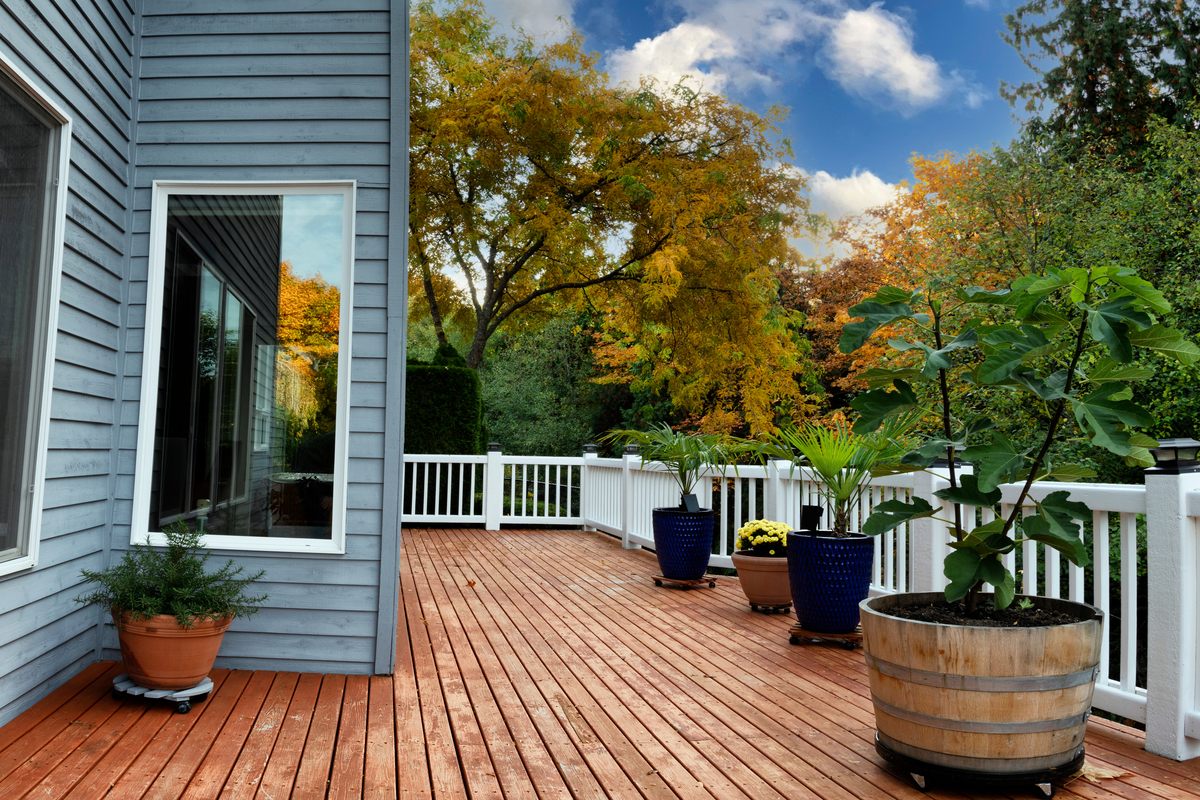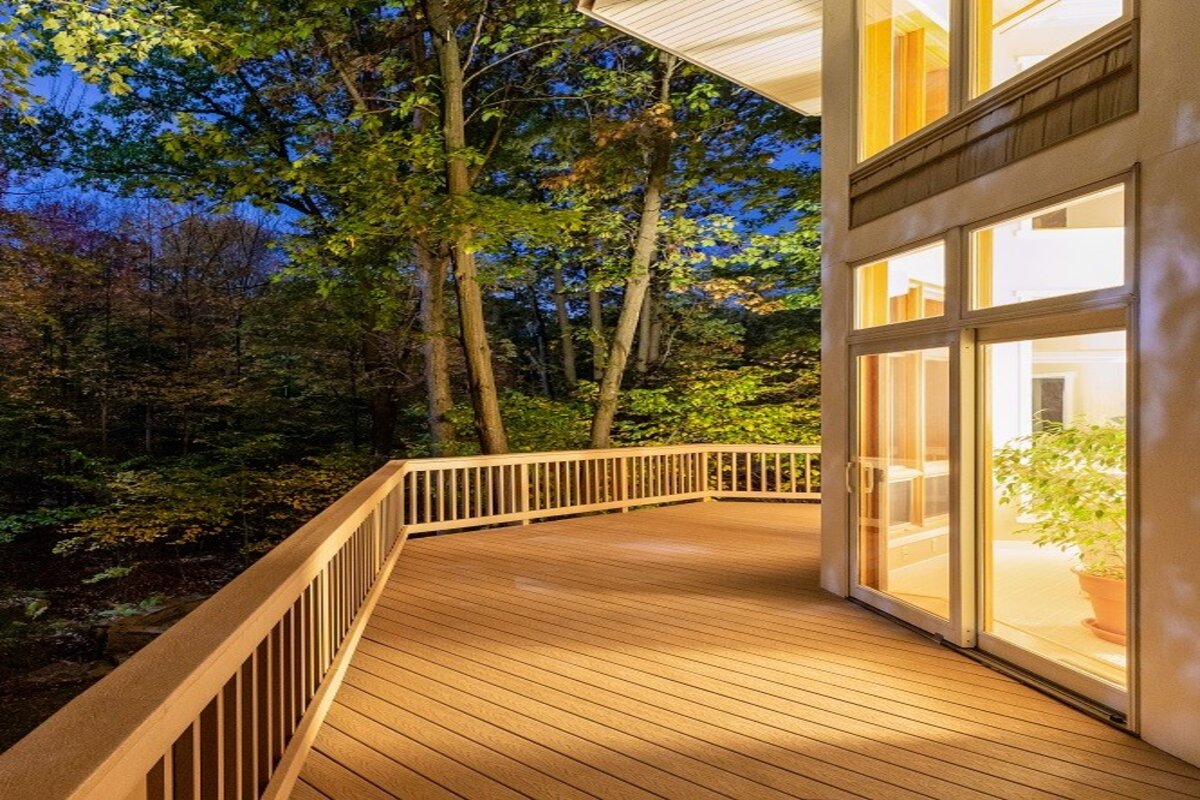To maintain the timeless beauty of your outdoor space, selecting the right finishes & stains for cedar decks is important. The right finish enhances the wood’s natural charm while protecting it from the elements. At Heartland Decks, we guide homeowners in selecting the best options for sealing and staining their decks, ensuring long-lasting vibrancy and durability. In this guide, we’ll walk you through everything you need to know to keep your deck looking great for years to come.
Why Finishing Matters for Cedar Decks
Cedar is a premium decking material thanks to its rich color, natural resistance to decay, and eye-catching grain. But like any outdoor wood surface, it’s exposed to harsh sun, rain, and fluctuating temperatures. A well-chosen finish keeps your deck looking great and performing even better.
In this post, we’ll explain your options for finishes & stains for cedar decks, what to consider before applying them, and how to avoid common mistakes. Whether you’re maintaining an existing deck or just had one built, this guide will help you make smart decisions.
Choosing Between Oil-Based and Water-Based Stains
The biggest decision you’ll face is whether to use an oil-based or water-based stain. Both have benefits, but the right one often comes down to your goals and how you use your deck.
Oil-Based Stains
We recommend oil-based stains for homeowners looking for deep color and maximum penetration. Here’s why:
- Deeper Penetration: Oil-based products soak into the cedar more effectively, giving you a rich, vibrant tone.
- Longer-Lasting Look: Because it penetrates deeply, the color tends to last longer—especially in areas with less sun exposure.
- Enhanced Grain: This type of stain enhances the natural grain of cedar, bringing out its full visual appeal.
Water-Based Stains
If you’re looking for something quick and easy, water-based stains have their advantages too:
- Faster Dry Time: These dry much quicker, making them ideal if you’re on a tight schedule or in a more humid region.
- Easy Clean-Up: Spills and tools clean up easily with soap and water.
- Environmentally Friendly: Water-based finishes generally contain fewer volatile organic compounds (VOCs), making them better for the environment.
Does Color Choice Affect Maintenance?
A common question we get is whether darker or lighter stains require more upkeep. The truth is, sunlight exposure plays a much bigger role than color. Even the best stain can’t stop the sun from fading your deck over time. If your deck gets a lot of direct sun, expect to re-stain more often—regardless of color.
What If You Keep Cedar Natural?
Some homeowners prefer the natural look of cedar and opt for a clear water sealer instead of a stain. While this keeps the wood’s original color, it still requires maintenance:
- Apply Water Sealer Yearly: You’ll need to reapply at least once a year, sometimes twice depending on weather and usage.
- Watch the Weather: Just like stain, water sealers need dry conditions to cure properly.
So while a natural finish is low on pigment, it’s not low on upkeep.
The Right Time to Stain
Timing your staining project is just as important as choosing the right product. Here are a few things to keep in mind:
- Avoid Rainy Windows: Don’t stain if there’s a chance of rain in the next 24–48 hours. Some stains need 3 to 7 days to fully cure.
- Watch the Temperature: Mild, dry weather is best. Staining during hot or humid days can cause uneven drying and poor absorption.
- Plan Ahead: Always check your local forecast before starting your project.
Prep is Key: Don’t Skip These Steps
One of the most common mistakes we see is skipping or rushing the prep work. Prepping your deck properly helps the stain stick better and last longer.
Proper Preparation Includes:
- Cleaning the Deck Thoroughly: Remove dirt, mildew, and old finish residue using a deck cleaner or brightener.
- Sanding if Necessary: If the wood is rough or weathered, give it a light sanding to smooth it out.
- Let It Dry Completely: Moisture in the wood can block stain from absorbing properly. Always give your deck time to dry before applying finish.
Application Tips for Best Results
Once your deck is prepped, it’s time to stain. But even this step can go wrong without careful application.
Here’s what we recommend:
- Apply Thin, Even Coats: Don’t overdo it. Too much stain can prevent the wood from absorbing properly and may alter the final color.
- Work in Small Sections: This helps avoid overlap marks and ensures even coverage.
- Follow Manufacturer Instructions: Every stain is different. Always read and follow the label.
In Summary
At Heartland Decks, we know cedar is an investment—and protecting that investment matters. Whether you choose oil-based or water-based, rich colors or natural tones, applying the right finishes & stains for cedar decks makes all the difference. Focus on proper prep, avoid rushing the process, and always consider your deck’s exposure to the elements.
If you’re unsure where to start or just want professional results without the hassle, contact us. We’ll take care of your cedar deck like it’s our own, from prep to finish.






